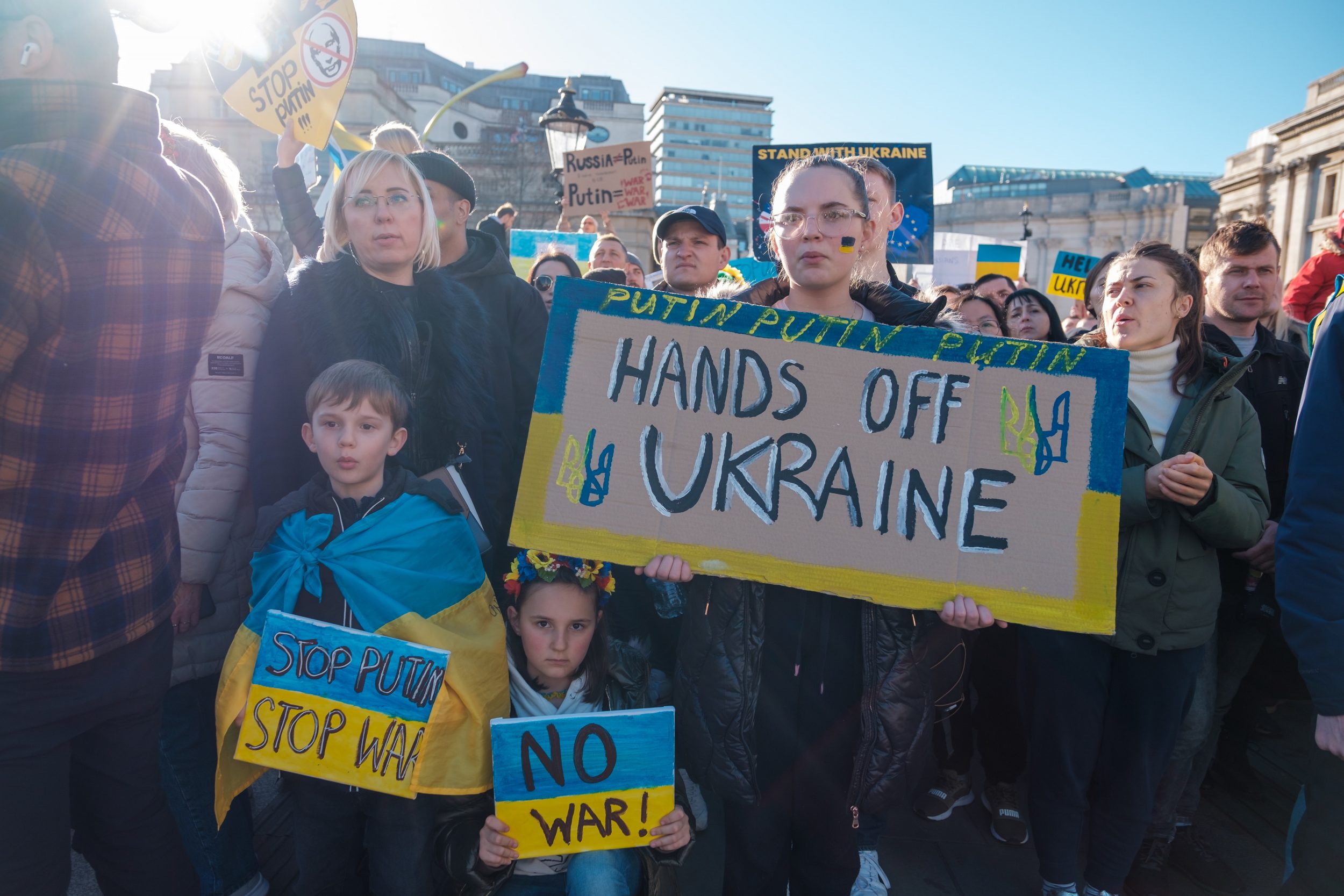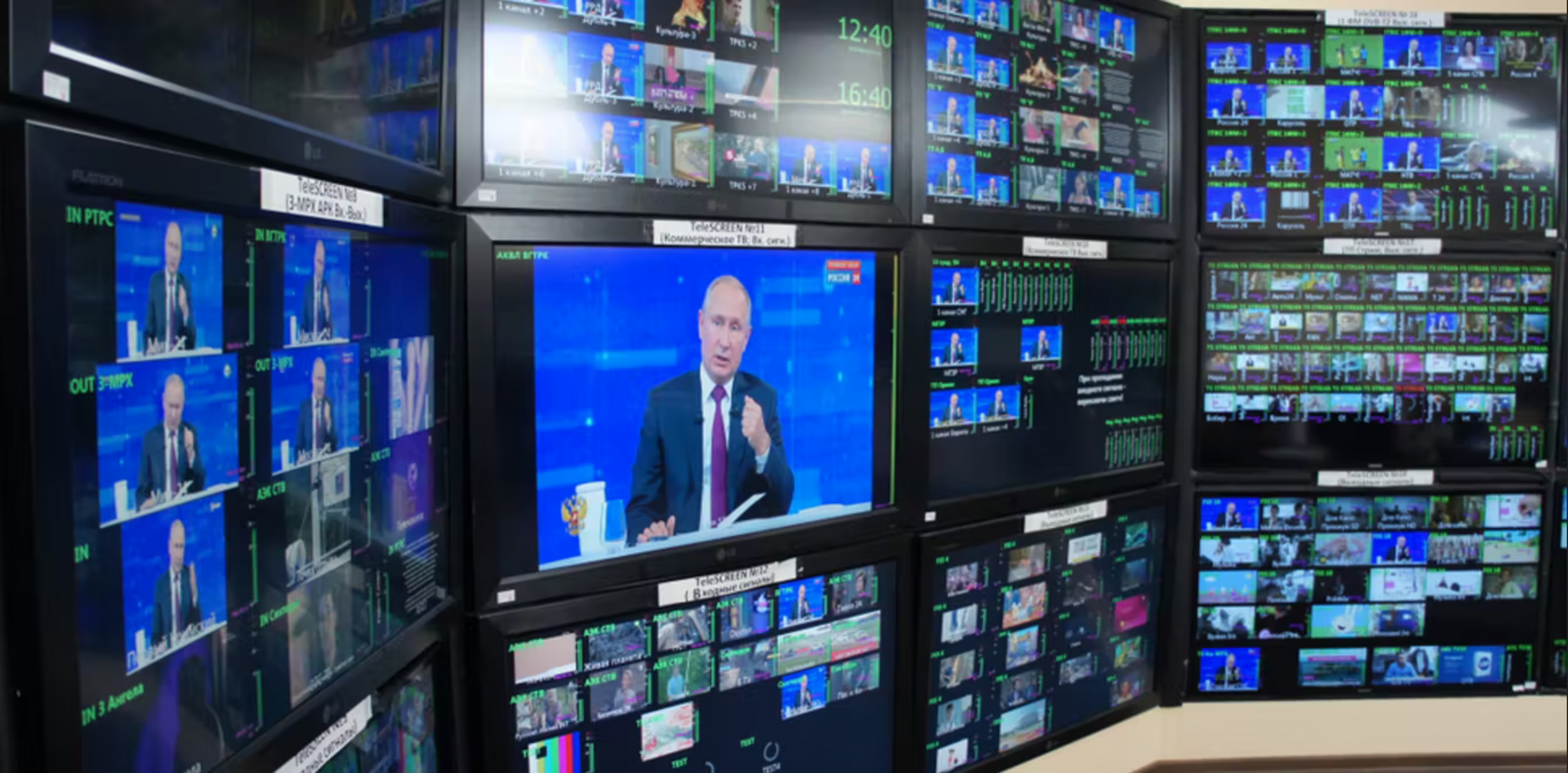 More than 100 days after Russia invaded Ukraine, King’s College London’s Gregory Asmolov argues that the power of Russian propaganda to prevent any serious opposition from within Russian society remains a key aspect in understanding this ongoing war.
More than 100 days after Russia invaded Ukraine, King’s College London’s Gregory Asmolov argues that the power of Russian propaganda to prevent any serious opposition from within Russian society remains a key aspect in understanding this ongoing war.
Russian propaganda has become one of the core topics on the agenda since the beginning of Russian aggression against Ukraine in February 2022. It seems that Russia lost the information war in the global information space (or has not even tried to win it there, despite the existence of state-sponsored global information media outlets like RT). However, the Kremlin seems to be continuing to win the internal information wars and successfully protecting the legitimacy of the conflict as far as the Russian audience is concerned. Understanding the power of Russian propaganda, and the roots of this power, may potentially help us to understand why many Russians either support the war or remain silent. One may also ask how propaganda survives and remains powerful in the networked environment of the 21st century, which offers every Internet user a multitude of alternative sources. I propose here eight arguments addressing this question.
1. Beyond disinformation: The triangular model of propaganda
When discussing propaganda, we often focus on the role of disinformation as a key element. Russian propaganda, however, relies equally on three elements – disinformation, isolation and intimidation. Successful disinformation and the construction of the war in a way that highlights its legitimacy cannot work without the isolation of the Russian information space from external sources that may challenge the Kremlin’s narratives. Thus, we can see numerous efforts to block any external platforms (e.g., by declaring Meta an extremist organization and blocking Twitter) and to prohibit independent voices (including declaring media websites and journalists to be “foreign agents”). That said, in the global networked environment, isolation does not offer an ultimate solution for the creation of an environment where disinformation can flourish without being challenged. Therefore, the third element of the Russian propaganda model is the intimidation of those seeking to challenge state-sponsored narratives. This intimidation targets both local media and individuals. New laws and new forms of regulation offer increased opportunities to prosecute those who manifest disloyalty and dissent. Intimidation also relies on a state-sponsored vigilantism that targets those unwilling to remain silent. The increasing failure of isolation policies leads to an increasing level of intimidation and repression.
2. Propaganda: Easy to start a war; hard to end it
Propaganda has to work much harder to finish a war than to start it. Russian propaganda was quite successful in explaining to the Russian audience, through a variety of narratives, why the invasion of Ukraine is a just war. It dedicated multiple efforts to the construction of Ukraine as a threat and to arguing that Russia, accordingly, had no alternative. However, one may say that the success of Russian propaganda in explaining the war’s legitimacy led Russian decision-makers into a trap. These propaganda efforts relied on an assumption that the war would be fast and victorious. However, the longer the war continues, the more challenging it becomes to explain how any type of agreement with the Ukrainian side can be considered a victory. The major concern of Kremlin propaganda is not to justify the war, but to convince the Russian public that Russia is the winner. If Russian propaganda has been successful in convincing the public that this is a war against Nazism, how it will explain any ceasefire with those portrayed as “Nazis”? According to Meduza (a liberal Russian-language website based in Latvia), the Kremlin administration sees no “good PR scenarios for exit” from the conflict that will not lead to a collapse of the Russian authorities’ popularity.
In this light, one may argue that the successful management of propaganda in a time of war requires the construction of feasible goals that can be viewed as a victory. For instance, from the very beginning, the Ukrainian side has successfully transformed Russian military ships into memetic symbols of Russian aggression (The meme “Russian warship, go to Hell”, which came from a recording of negotiations between Ukrainian border guards on Zmeiny Island in the Black Sea and the Russian military ship, with the Ukrainian servicemen refusing to surrender.) Thus, the attack on and sinking of the Moskva, the largest Russian military ship in the Black Sea, which took part in the attack against the Ukrainian stronghold on Zmeiny Island, could be considered a major victory because of this symbolic value. If Russian propaganda fails to find an exit strategy that can be constructed as victory for the Russian audience, this may lead to increasing aggression as well as to a loss of control by Russian decision-makers.
3. Propaganda as sentiment management and channelling of aggression
Propaganda is a policy for the management of aggression. Sociologist Lewis Coser argued in his book The Functions of Social Conflict (1956) that conflicts can work as a “safety-valve” to “provide substitute objects upon which to displace hostile sentiments” and to support internal solidarity. The role of propaganda is to channel aggression towards external actors. In this case, the West, Ukraine as a “Nazi state”, and/or liberals depicted as “national traitors”. These objects may change depending on circumstances, but internal political stability requires their continuous existence. In this light, propaganda is mainly concerned with the creation of a demarcation line between “us” and “them”, relying on the transformation of various subjects into objects for the channelling of aggression. This transformation relies on a logic of dehumanization –different actors lose their voices and are objectified by public discourse in order to support political functions of the state.
4. A hybrid propaganda ecosystem: sofa, TV and laptop
The power of Russian propaganda has long been associated with the authorities’ control over the vast majority of TV channels in Russia. The increasing popularity of social media, including YouTube, as well as the decline in the popularity of TV among the new generations of Russians, has raised a question as to whether Russian propaganda is losing its power. However, the Russian war against Ukraine appears to show that it is too early to bury TV. The power of Russian TV-sponsored propaganda relies on its capacity to create a hybrid structure with social media. Such a structure can be seen in the context of the domestication of warfare, where the state has been increasingly successful in making war a part of citizens’ everyday lives, and specifically a part of their domestic environment (for more details see Asmolov, 2021).
This can also be linked to the notion of participatory propaganda. This notion highlights how the power of modern propaganda relies on a capacity to engage the audience in the proliferation of propaganda and to increase the scope of citizen participation in conflict. Participatory propaganda becomes particularly powerful once the older generation becomes more tech savvy, allowing older users not only to consume, but also to disseminate state-sponsored messages through their social networks.
5. Propaganda: The construction of cognitive filters in order to reject alternative worldviews
The major purpose of propaganda is the development of cognitive filters and heuristics that reject any alternative version of reality. Propaganda aims to create an emotional state in people that diminishes their critical thinking. The consistent flow of TV shows is used mainly to ensure that people are kept in this state of high emotional engagement. These shows follow the rules of drama and aim to create an addictive effect on their audience. This is also why, for people who do not watch these shows as part of their everyday consumption, and for those minorities who are able to preserve their creative thinking capacity, watching them may cause almost physical pain. Accepting or rejecting propaganda messages becomes a major type of marker or division between “our own” and “others”.
6. Propaganda as a defence mechanism
Propaganda is particularly essential when ontological security, described by Anthony Giddens in 1991 as the need to experience oneself as a whole, is shaken. It is essential to surviving a crisis in a totalitarian state where people have no agency over their own lives as a result of their political environment. The purpose of propaganda is to protect the audience from reality by creating a fake construct of order, stability and security. In this light, propaganda can be considered as a defence mechanism against reality. The fundamental nature of the need for security, as famously highlighted by Maslow (1943), leads to an increasing demand for propaganda in times of crisis. The supply of propaganda by the state is therefore driven not only by the political goals of the authorities, but also by the audience’s demand for safety and to resolve increasing contradictions that lead to continuous stress.
The demand side of propaganda also explains why people try to escape from any sources that may potentially lead them to question and challenge propaganda and its messages. This is also why propaganda often leads to what may look like irrational thinking, full of contradictions, on the part of its audience. Sociologists exploring the Russian public’s reaction during the war in Ukraine have identified such contradictions as one of the main features resulting from Russian propaganda. Once an argument is known that may challenge the propaganda, people either aggressively reject it or find a discursive strategy for ignoring the contradiction.
7. Propaganda and disconnection
The disconnective power of propaganda relies on the ancient political formula of “divide and rule”. The cognitive filters shaped by propaganda are applied in order to categorize social environments and to classify people as “ours” or “aliens”. Friends and followers on different social networks are continuously assessed on the basis of their attitudes towards the crisis. Propaganda triggers disconnection by both sides, while the engagement of users in the proliferation of propaganda also leads to disconnection on the part of those who do not agree with propagandist messages.
In this light, we may see that participatory propaganda leads to a substantial rise in waves of social untying and disconnection, e.g., banning and unfriending. The users of social networks also actively publicize cases of unfriending as a part of social boundary management in the context of the crisis, in order to explain the logic of their disconnective actions. As a consequence, we witness how propaganda leads to a performance of disconnection. An outcome of this propaganda-driven disconnection is the emergence of increasingly isolated information cocoons that are essential for propaganda’s success. This disconnection can be seen not only between remote and online friends with previously weak ties, but also among members of families and close friends with strong ties. Propaganda is also used to facilitate disconnection between generations, which has become one of the key vulnerabilities of younger people unable to find a common language with their parents.
8. Language and the discourses of propaganda
An essential element in the success of propaganda is the creation and successful proliferation of its own language (that can be also addressed as weaponization of language). The proliferation of this language relies on both traditional and new media. For instance, following the Russian invasion of Ukraine we could see the emergence of a new vocabulary that included such terms as “special operation” (while the word “war” was not only prohibited and excluded from official discourse, but also criminalized) and “denazification”. Victor Klemperer suggested the concept of LTI (Lingua Tertii Imperii) in order to show how Nazism relied on a linguistic construct and changed the everyday communication of German society during Hitler’s rule. In the digital environment new forms of LTI are supported by digital affordances. The new language of propaganda seeks to rely on memetic forms of proliferation in order to gain dominance within isolated segments of social networks (while those who may challenge such language and messages are excluded through disconnective processes). Memes are created in order both to proliferate propaganda and to challenge it, but the circulation of these two types of memes takes place in different segments of social networks, which are mainly isolated from each other. The weaponization of language also leads to the rejection of Russian by some of the Russian-speakers who live in Ukraine.
Conclusion
The major vulnerability of propaganda is potentially self-created, when it creates expectations that can only be fulfilled on the basis of new symbolic constructs. This can be seen specifically in relation to expectations of a rapid victory, and to the need for a picture of victory or to explain the absence of such a picture. The gap between expectations created by propaganda and the picture later offered by that same propaganda may also lead to increasing aggression because of the emotional nature of the propaganda. Therefore, the short-term success of propaganda in justifying conflict and in emotionally engaging the audience may potentially lead to failure in the long term. This failure may also be linked to a dramatic collapse of ontological security that may lead to a rechanneling of aggression from the public away from external enemies and towards internal political structures.
This article reflects the views of the author and not those of the Media@LSE blog nor of the London School of Economics and Political Science.
Featured image: Photo by Artem Beliaikin on Unsplash





